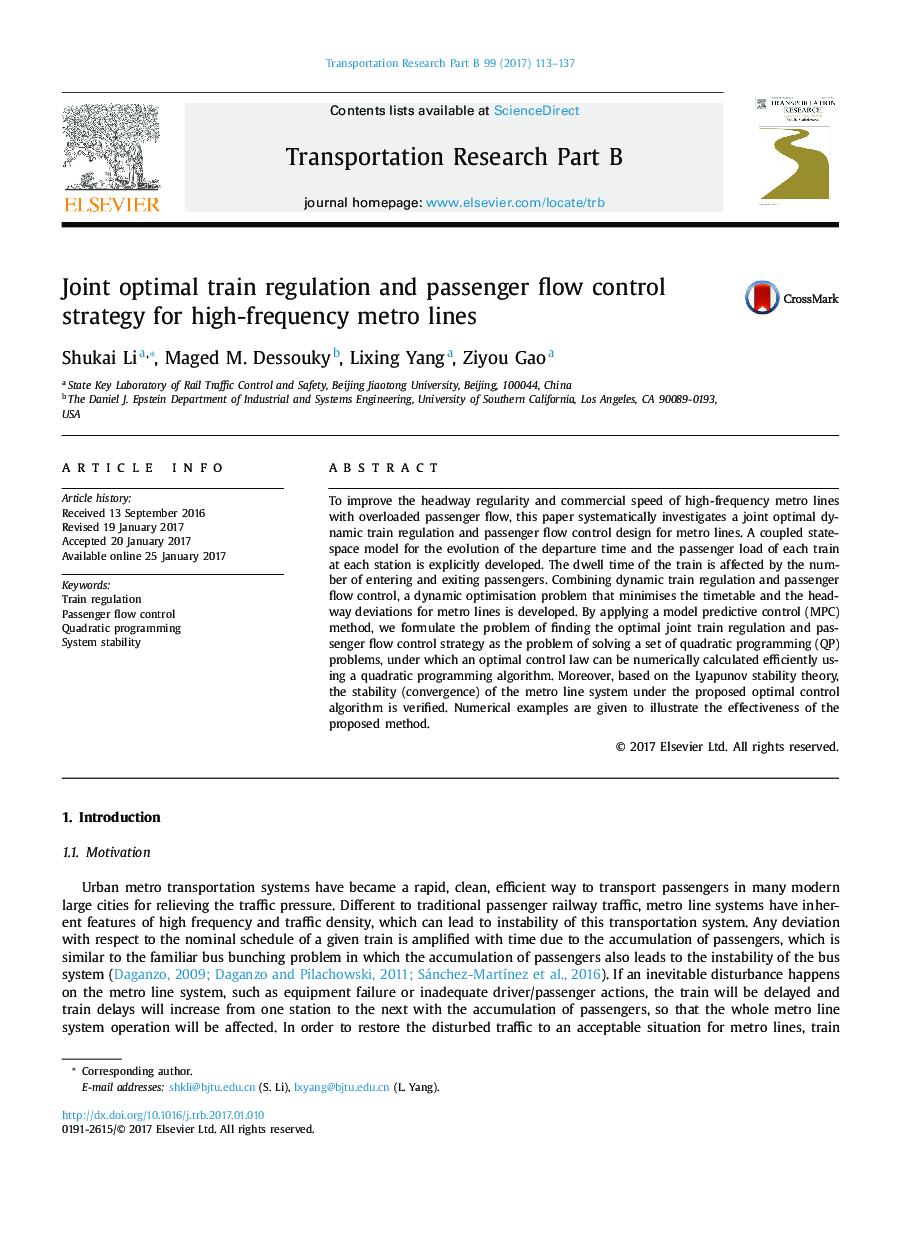| Article ID | Journal | Published Year | Pages | File Type |
|---|---|---|---|---|
| 5127051 | Transportation Research Part B: Methodological | 2017 | 25 Pages |
â¢A coupled dynamical model for the train traffic and passenger load of metro lines is developed.â¢Joint optimal train regulation and passenger flow control strategy is designed for metro lines.â¢The stability (convergence) of metro lines system is verified under the proposed control algorithm.â¢The proposed method significantly improves the headway regularity and commercial speed of metro lines.
To improve the headway regularity and commercial speed of high-frequency metro lines with overloaded passenger flow, this paper systematically investigates a joint optimal dynamic train regulation and passenger flow control design for metro lines. A coupled state-space model for the evolution of the departure time and the passenger load of each train at each station is explicitly developed. The dwell time of the train is affected by the number of entering and exiting passengers. Combining dynamic train regulation and passenger flow control, a dynamic optimisation problem that minimises the timetable and the headway deviations for metro lines is developed. By applying a model predictive control (MPC) method, we formulate the problem of finding the optimal joint train regulation and passenger flow control strategy as the problem of solving a set of quadratic programming (QP) problems, under which an optimal control law can be numerically calculated efficiently using a quadratic programming algorithm. Moreover, based on the Lyapunov stability theory, the stability (convergence) of the metro line system under the proposed optimal control algorithm is verified. Numerical examples are given to illustrate the effectiveness of the proposed method.
